28 Unique Objects from the Ah-Tah-Thi-Ki Museum – Part 2
Welcome back to the second half of our two-part post commemorating the Ah-Tah-Thi-Ki Museum’s 28th Anniversary! Two weeks ago, we shared the first 14 unique objects from the Museum’s Collection. This week, join us for the final 14 as we explore just a tiny sliver of this incredible collection built over the last 28 years.
Again, we hope to emphasize that these two posts highlight just a small fraction of the Museum’s extensive Collection. It features over 200,000 historic objects and artworks. This diverse array provides a unique glimpse into the rich history and culture of the Seminole Tribe of Florida, as well as other Native American communities across the Southeastern United States. Within the Collection, you’ll find objects that capture the daily lives, creativity, and enduring spirit of these communities. From historical newspapers and personal manuscripts to beautifully crafted patchwork clothing, handwoven baskets, dolls, military memorabilia, and more. We invite you to explore the Museum’s Online Collection. Discover and appreciate many more of these remarkable items from wherever you are.
Letter
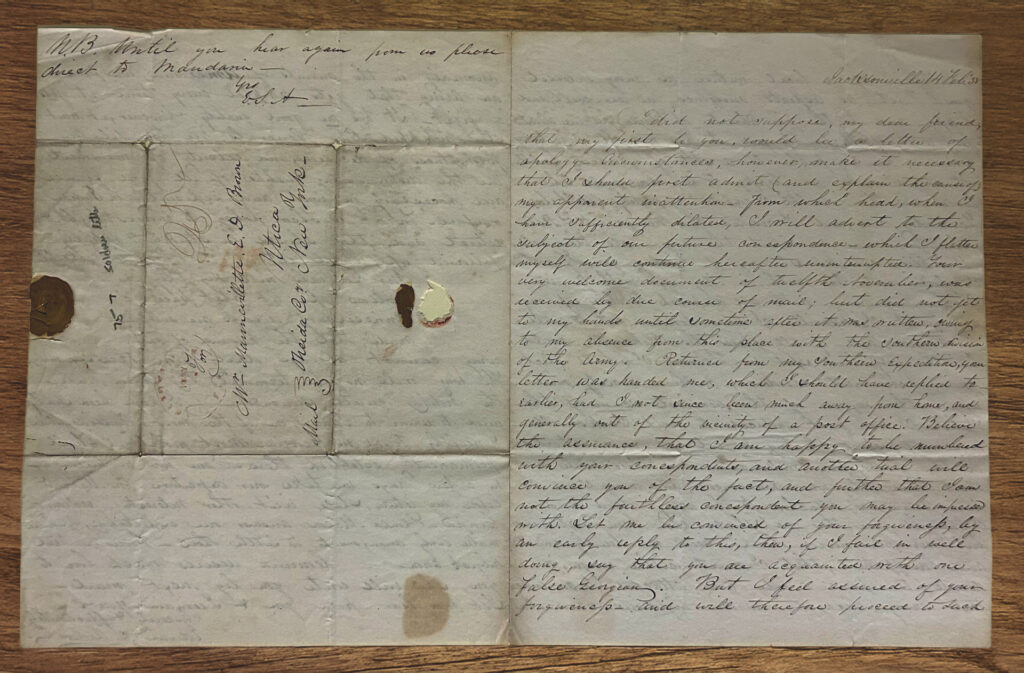
1995.14.14, ATTK Museum
The Museum has an incredible collection of historic letters, particularly pertaining to the Seminole War period. Above, you can see one of these letters. Edward Aldrich writes to his brother-in-law Manne (Mannevillette Elihu Dearing Brown) on February 14, 1838 of the current American war effort.
He shares that “we should have been victorious, but our maneuvers have been badly conducted, and ineffectual, that I must either resign, or decide to spend a life time attached to an impotent army, engaged in an inglorious war – the anomaly in the annals of American warfare.” “The war will not be terminated this season, unless the Indians quietly surrender.” Dozens of letters to and from Manne and his family members can be found in the collection. Manne was a 19th Century painter, and for a large portion of time painted in Paris, particularly for the range represented in these letters.
Wooden Eagle Sculpture
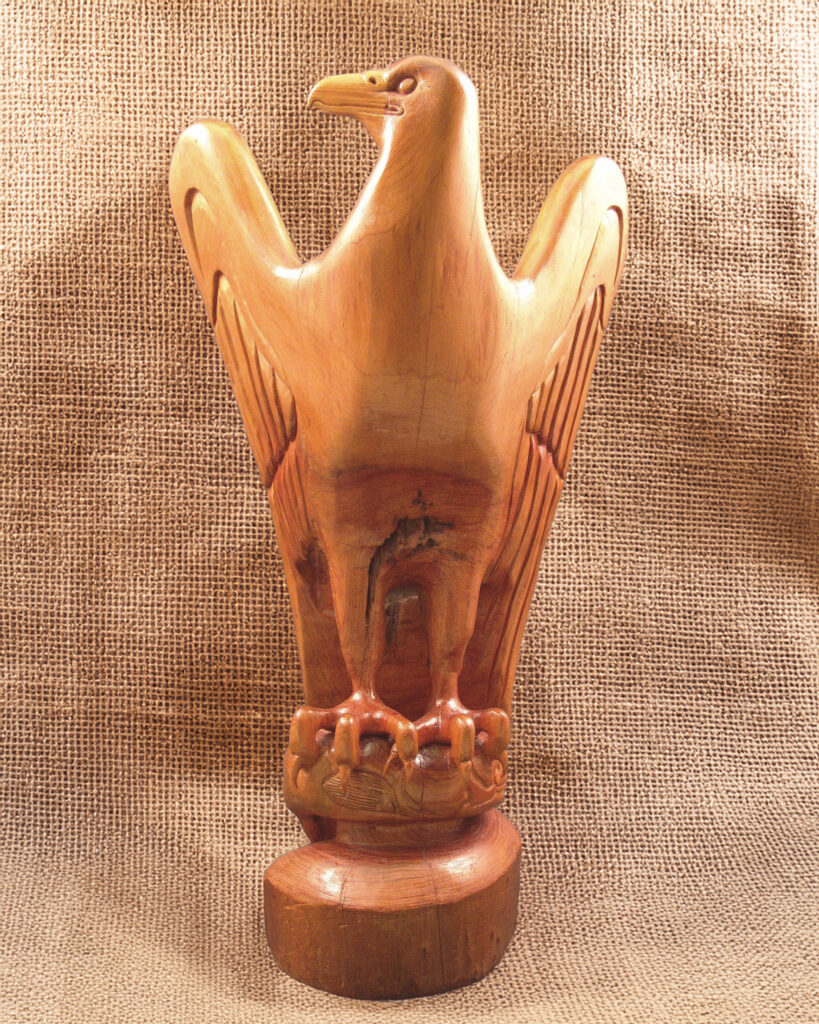
1998.37.1, ATTK Museum
Wood carving has long been a Seminole crafting tradition, predominantly for men. During the tourism boom of the 1920s and 30s, wood carving also became an important tourist craft. Men would carve small totem poles, canoes, and other figurines for sale. This eagle, carved by Mark Billie, is an example of the incredible artistry found in Seminole wood carving. It depicts an eagle with a fish in its talons. The sculpture is made from cypress, which was collected from the Big Cypress Reservation and harvested near the Museum. Last time, we shared a full-sized Seminole totem pole from the Museum’s Collection carved by Bobby Henry. The Museum actually cares for two totem poles in their collection. The other was carved by Mark Billie, and an image of it can be found in a previous blog post.
Creek or Seminole Moccasins
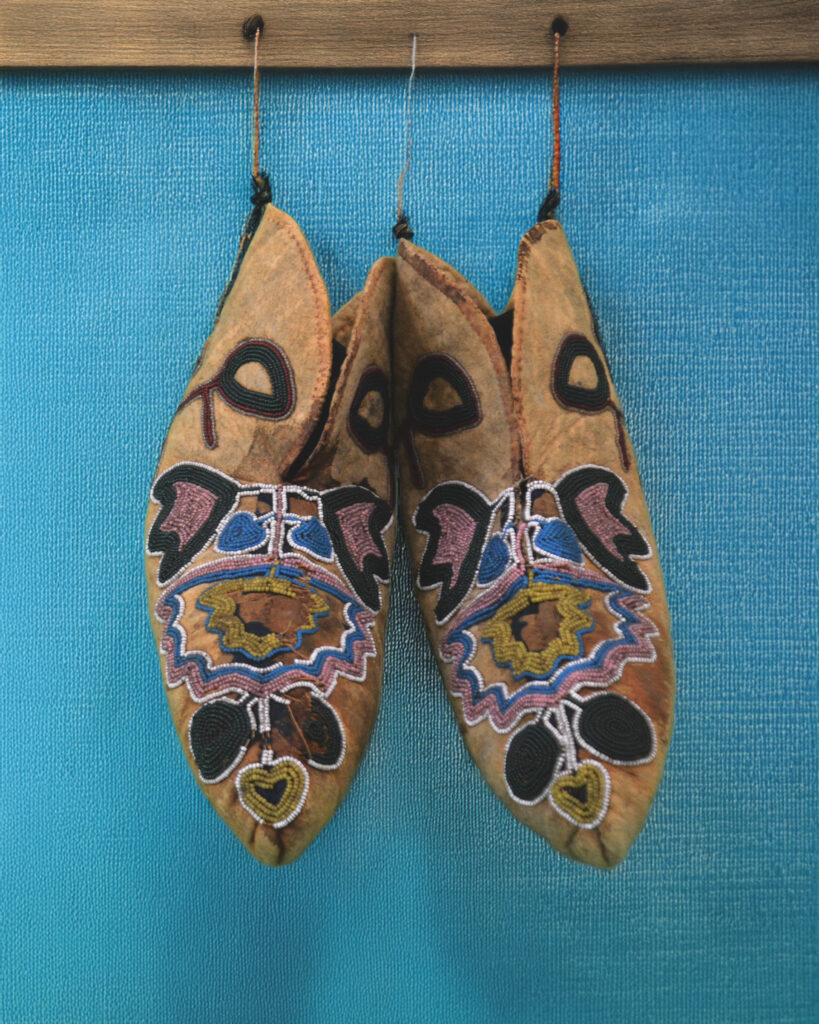
1998.41.1, ATTK Museum
Made of hide and glass beads, these Seminole moccasins show incredibly detailed beadwork and craftsmanship. They date to around 1830, and were previously owned by Gary Hornsby, of Denver, Colorado and the Lee Lyon Collection, Aspen, Colorado before finding their way into the Museum Collection. Beadwork like this, and the bandolier bag in our previous post, almost became lost to the Long War. But, in the last few decades some dedicated Southeastern artists have worked hard to revive the art.
Stickball Sticks
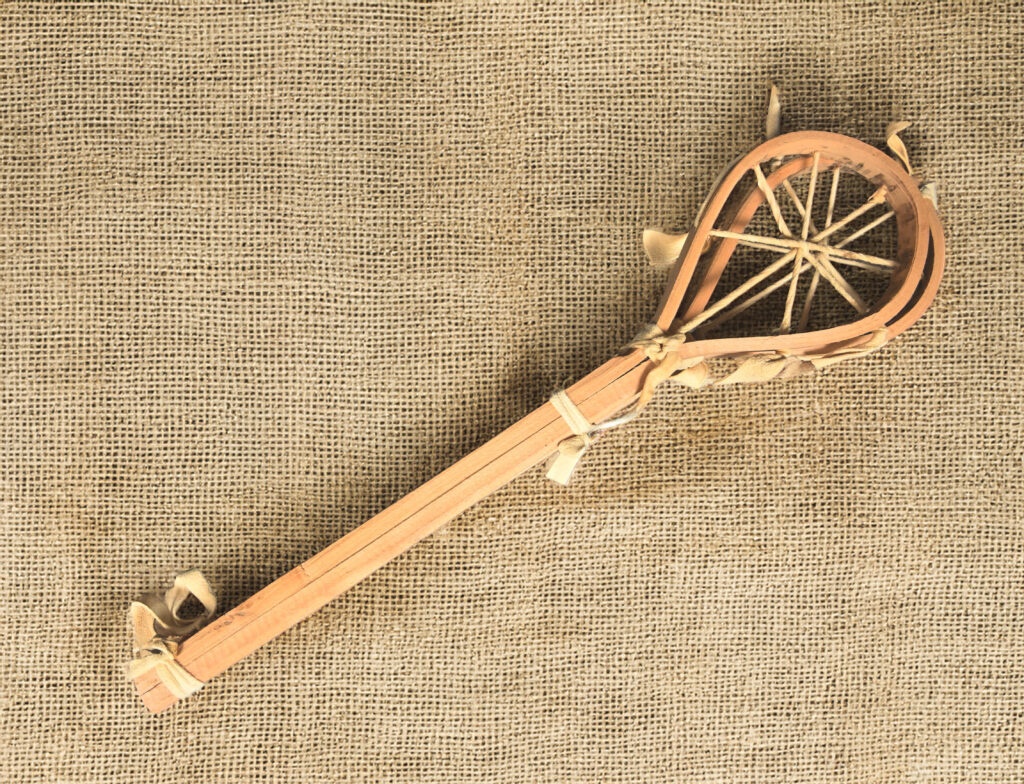
1998.66.5, ATTK Museum
Like the moccasins shown above, these stickball rackets are another thread connecting the Seminoles of today to other Southeastern tribes like the Muscogee (Creek). Stickball, which is similar in many ways to the two-racket version of lacrosse, is a game that was traditionally used to settle disputes. Each racket is made from a single piece of wood, bent at the center with leather thing lacing. Many tribes of the Southeast have some version of the game, with specific differences between tribes. Today, stickball is still an important part of Seminole culture. Visitors to the Ah-Tah-Thi-Ki Museum can learn more about stickball in one of the permanent exhibits.
Big Cypress Bingo Matchbooks
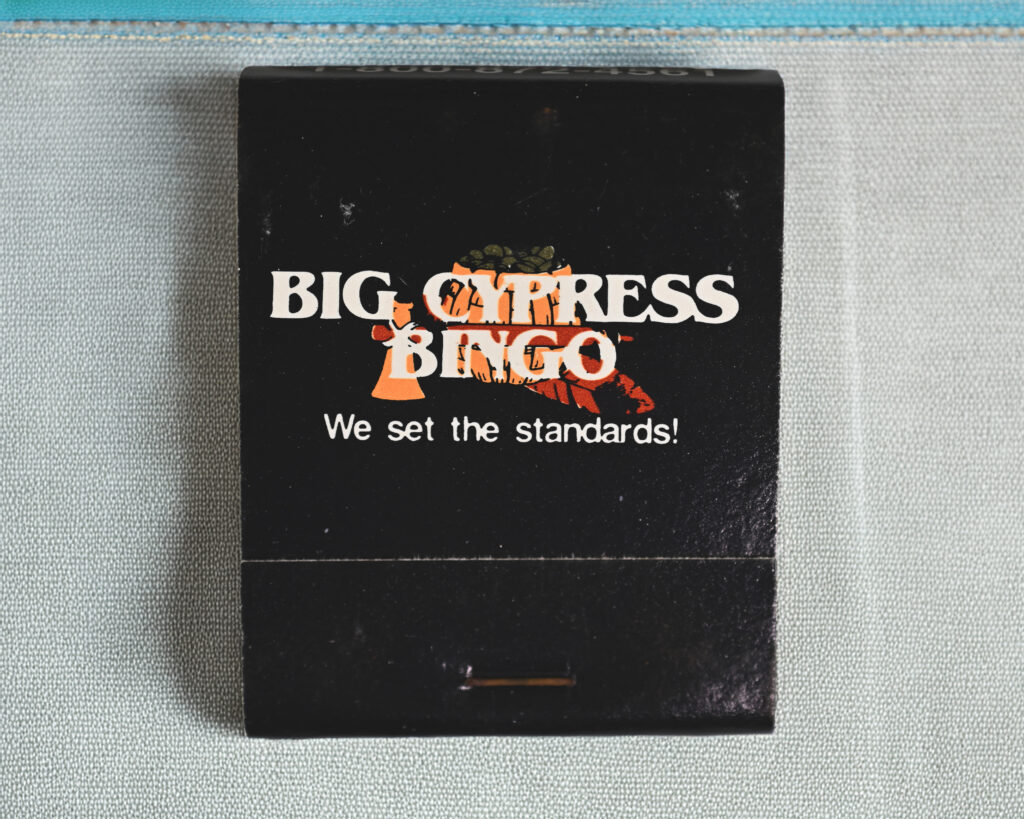
1998.67.1, ATTK Museum
One of the best parts of the Ah-Tah-Thi-Ki Museum Collection is the items that are unique and important to specific parts of Seminole history. Bingo, which would pave the way for the casinos of today, had a huge impact on the trajectory of the Seminole Tribe of Florida. Above, you can see 149 identical matchbooks advertising the Big Cypress Bingo Hall.
They say “Big Cypress Bingo, We set the standards” on the front, and “If you want to be a part of the biggest, best, most exciting experience in America…you have only one choice…WE SET THE STANDARDS” on the back. Inside the cover of each matchbook you can find the game titles and jackpot totals listed. The Big Cypress Bingo Hall was opened in 1987 after the success of the Hollywood Seminole Bingo Hall. Although this particular bingo hall would not prove as successful as the other bingo halls, it still holds an important part in Seminole history.
King Sized Seminole Doll and Baby
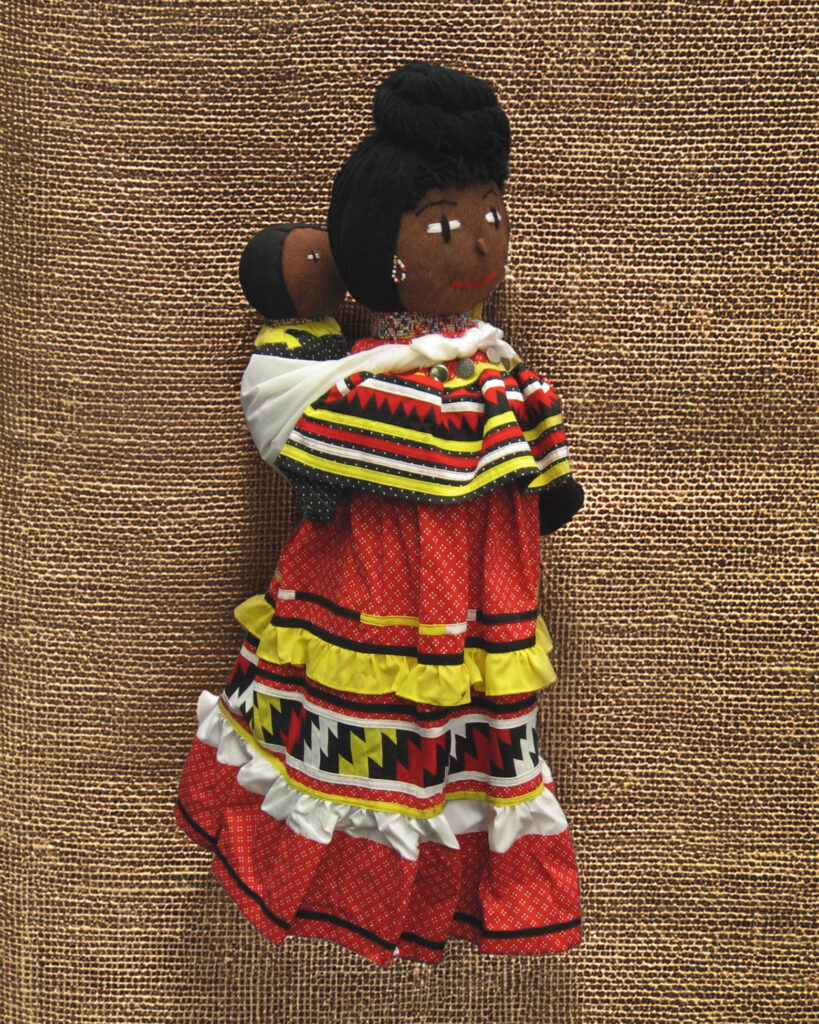
1999.61.1, ATTK Museum
Seminole dolls are an iconic and celebrated traditional Seminole craft. Last time, we shared both a unique wooden doll, as well as a doll-head basket. This week, we are sharing another augmentation of the traditional palmetto fiber Seminole dolls we know so well. Like the doll-head basket from last week, this doll takes the crafting to another level. This “king sized” palmetto fiber doll won first place at the Seminole Tribal Fair in February 1999 and was crafted by Loretta Micco.
What makes her interesting is the baby on her back: you can see a young child slung across the back of the main doll. The mother has “yarn topknot hair, red, yellow and black beaded earrings, multi-colored beaded necklace…red printed fabric cape with 5 silver buttons, one band of black and red patchwork and several bands of yellow and red and white fabric, and red printed fabric dress with one band of yellow, red and white patchwork, and yellow ruffle in the middle.”
Blue Glass Trade Bead
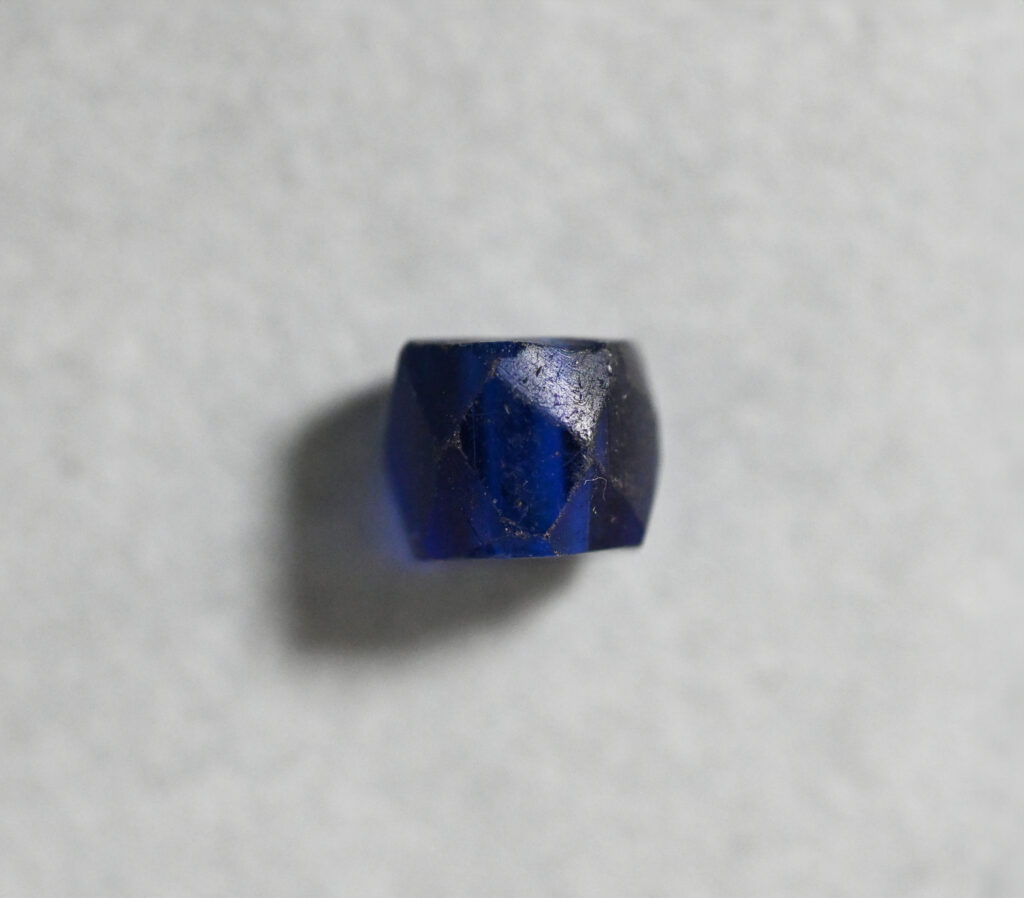
2002.166.441, ATTK Museum
It may be small, but this blue faceted trade bead has an interesting history! As we have talked about in previous blog posts, beads were an important part of Seminole fashion. Traditionally women would wear dozens of beaded necklaces that they cared for and took off and on each day. Bandolier bags, sashes, moccasins, and other items could be richly decorated with seed beads. Thus, they were an important trade item especially during pre-War times. Trade in beads would slowly resume after the war period was over.
Items such as these also could connect the Seminoles ancestors of Florida with other Southeastern tribes, as a complex trade system existed throughout the region. Later, Europeans would infuse the bead market with European made glass bead such as this one. This blue glass bead is most likely a Russian blue trade bead. Beads such as these are named for their rich cobalt blue color and were traded by Europeans to Indigenous peoples of the Americas.
Seminole License Plate
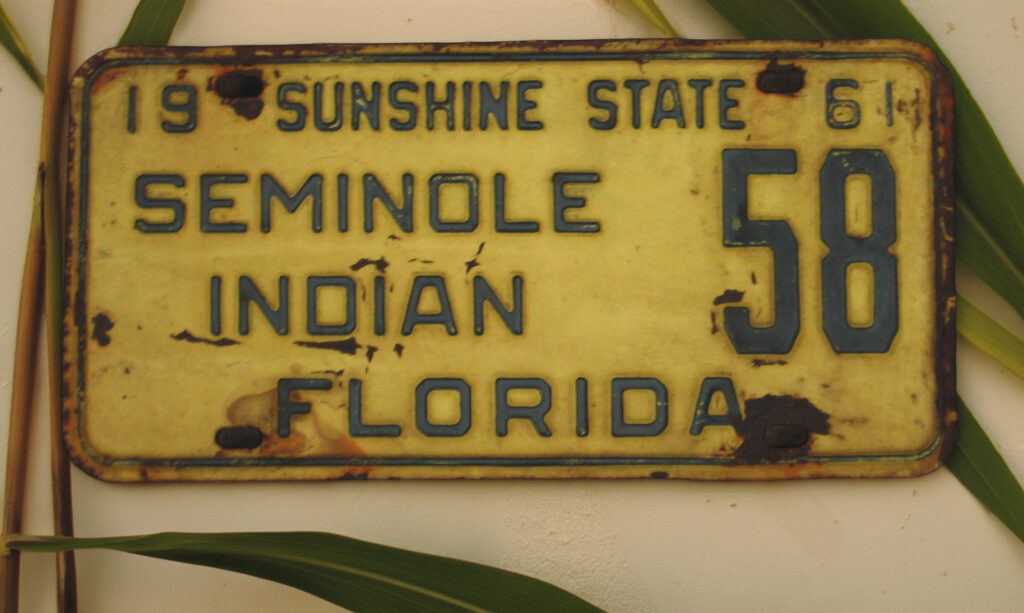
2002.42.98, ATTK Museum
This early Seminole Indian license plate would have been issued to any vehicle owned and operated by a Tribal Member. After 1960, Tribal Members could get a Seminole Indian tag without paying a fee, in an effort to register more vehicles. This vehicle tag dates to 1961, although you can see an earlier tag in a historic photograph featured in a previous post!
Buckskin Coat
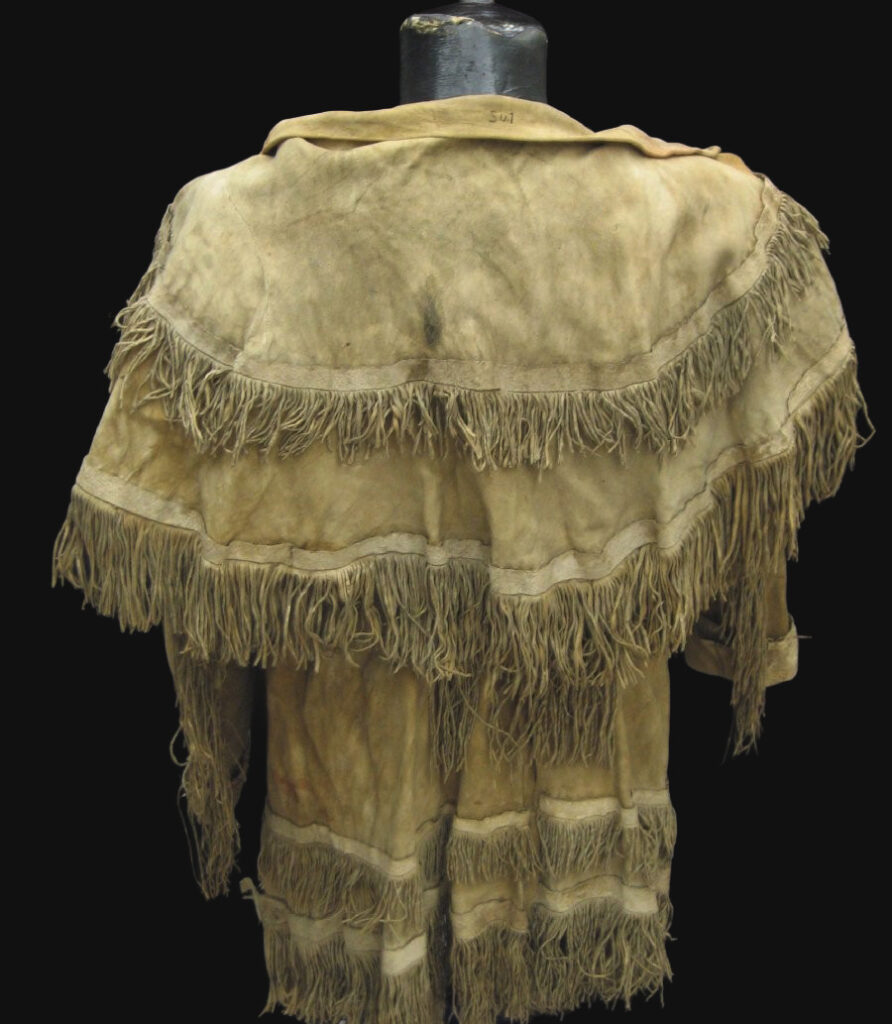
1998.58.1, ATTK Museum
Here, we have a buckskin fringed coat, thread sewn and possibly Cherokee. It is in a European style cut, and dates to somewhere in the 1800s. The cape part has two rows of fringe; the bottom is similarly trimmed. Most likely the two rows of fringe were originally trimmed with rows of fur strips, as there are remnants of red trade cloth welt on them.
The back slit is topped by a fringed panel. There are multiple repairs, some sinew sewn so most likely repaired by the owner with what was available at the time. There are no buttonholes, although there might be slight remains of a hook and eye closure system. The coat, despite being a couple of hundred years old, is in incredible shape.
Wood and Hide Rattle
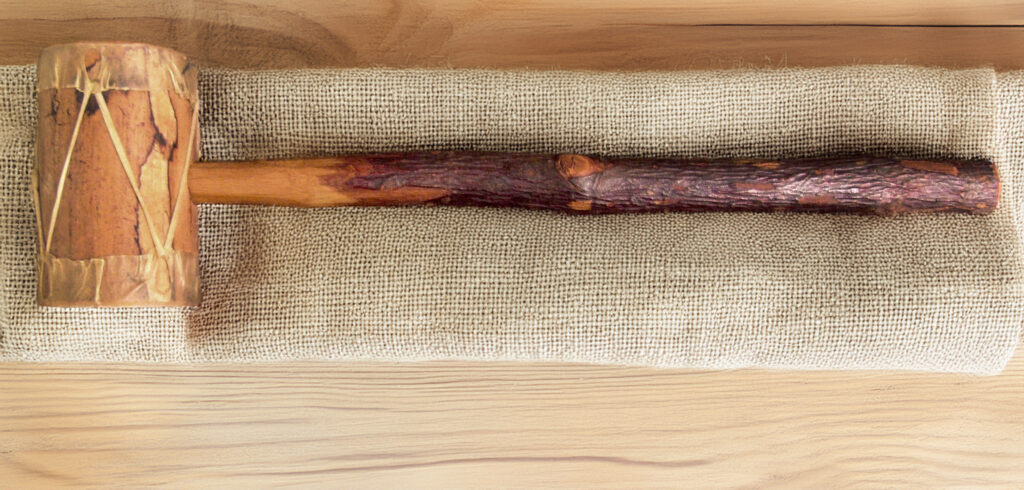
2008.14.1, ATTK Museum
Made of wood and hide, this rattle has an Indian head painted on one side. The other identifies the maker. The text reads: “Seminole Indian Dance Rattle made in Fla. by Buffalo Tiger.” This item in particular is important in context because of who made it. Buffalo Tiger was the first Chairman of the Miccosukee Tribe and helped them gain federal recognition in the 1960s.
Born in the Everglades in the 1920s, Tiger would serve his people for decades. Famously, Tiger would meet with Cuban dictator Fidel Castro in an effort to force the U.S. government to hear their demands for federal recognition. It worked, and the Miccosukee Tribe of Indians was federally recognized in 1962. Although politically distinct from the Seminole Tribe of Florida, there are many cultural and familial connections between the two.
Token
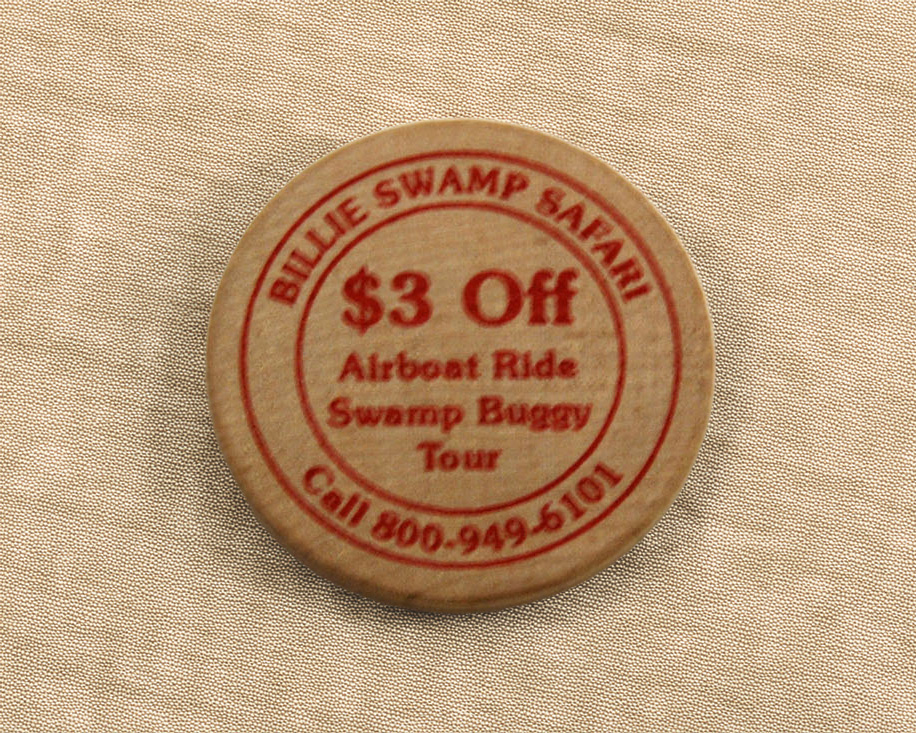
2009.3.148, ATTK Museum
Part of the Tribal Memorabilia collection, this little token probably would have been handed out as promotional material. Just like a coupon, this tiny wooden token would have gotten someone $1 off admission at the Ah-Tah-Thi-Ki Museum or $3 off an airboat ride at Billie Swamp Safari.
One side has “AH-TAH-THI-KI MUSEUM SEMINOLE TRIBE OF FLORIDA $1 OFF ADMISSION 954-792-0745” printed on it. The other side of the token has “BILLIE SWAMP SAFARI $3 Off Airboat Ride Swamp Buggy Tour Call 800-949-6101” printed on it. The wood grain is clearly seen on all surfaces. During the 1990s into the 2000s and 2010s the Seminole Tribe of Florida worked hard to revitalize their tourism entities. Billie Swamp Safari opened on the Big Cypress Reservation in 1993, and the Museum had their grand opening in 1997.
Florida Seminole Tourism Pin
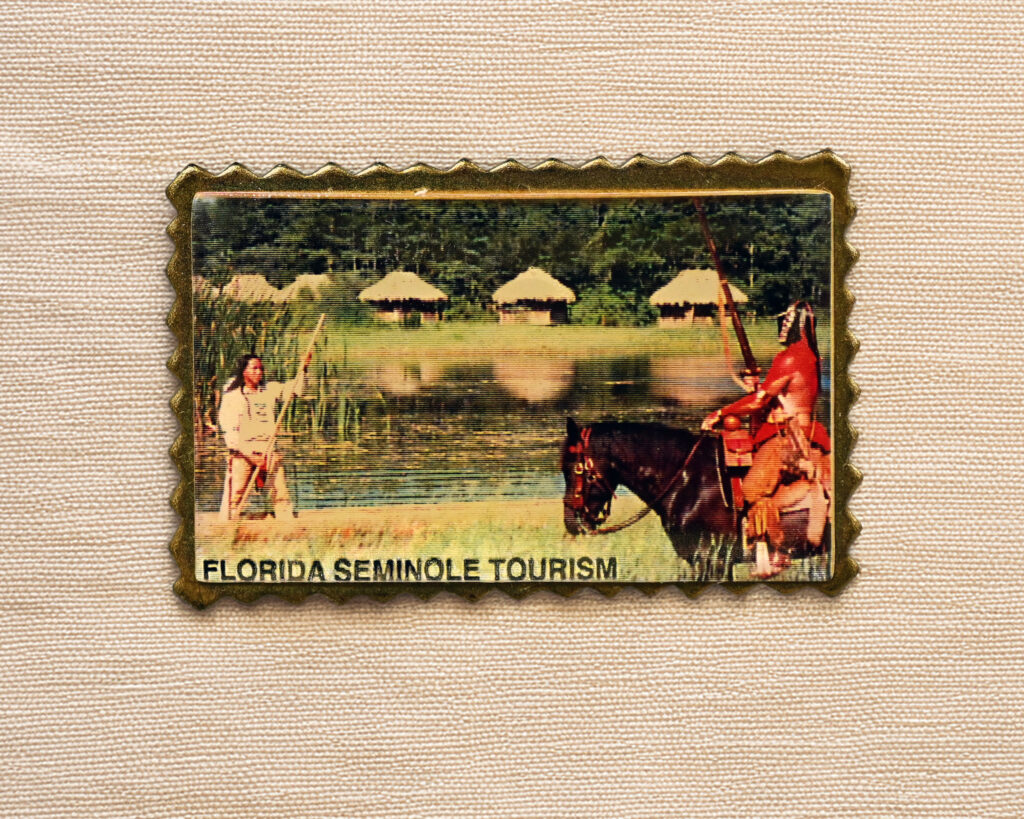
2009.3.149, ATTK Museum
How could we pass this object up? This pin reads “Florida Seminole Tourism” on the bottom. It has a photograph of a Seminole on horseback on the banks of the river behind Billie Swamp Safari. A tribal member is poling a canoe through the river and a group of chickees can be seen in the background. Items like this would have been given as promotional material to tourists.
Ceramic Sculpture
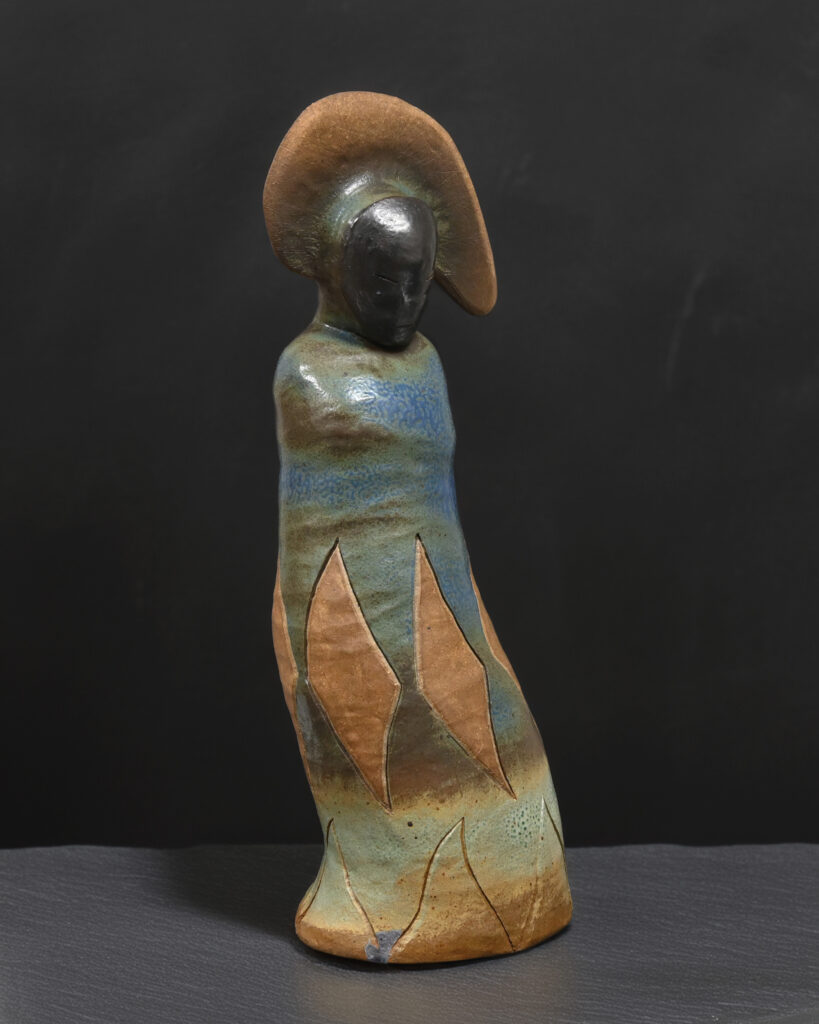
2014.21.1, ATTK Museum
Much like the walking stick that is our final object, this ceramic sculpture represents the next incarnation of contemporary Seminole art. Made by Pedro Zepeda, this stylized Seminole woman wears a patchwork skirt with a diamond design, and a traditional hairstyle. Her eyes are also reminiscent of the stitched-on eyes of a palmetto fiber doll, which intentionally do not represent a specific person or true features. Zepeda is an incredible Seminole artist and specializes in traditional Seminole arts such as leatherwork, woodworking, beadwork, patchwork, and basketweaving. He is an accomplished canoe carver. He also is a prolific contemporary visual artist.
Walking Stick

2019.21.1, ATTK Museum
A very special aspect of the Ah-Tah-Thi-Ki Museum Collection is that it is constantly shifting and growing, especially with the acquisition of new, modern Seminole art pieces. Seminole art is not, and never has been, static. As the times shift, so does the art. Thus, it is important to document not only changes and innovations in technique and new applications but also recognize and celebrate some of the incredible contemporary Seminole artists.
Above, you can see a beaded walking stick crafted by Ricky Doctor in 2015. Doctor is well known for his intricate beading style, as well as unique pieces such as this walking stick. Some of his art has been featured in past exhibits, such as the Art of Seminole Crafts.
The beaded walking stick depicts all the clans: Panther, Otter, Bird, Bear, Snake, Deer, Wind, and Big Town on a field of light blue. Medicine colors are prominent at the top (bands) and the bottom (crosses) of the beaded area, as well as at the top of the stick (four interlinking circles attached with a leather thong). The walking stick design was inspired by a dream.


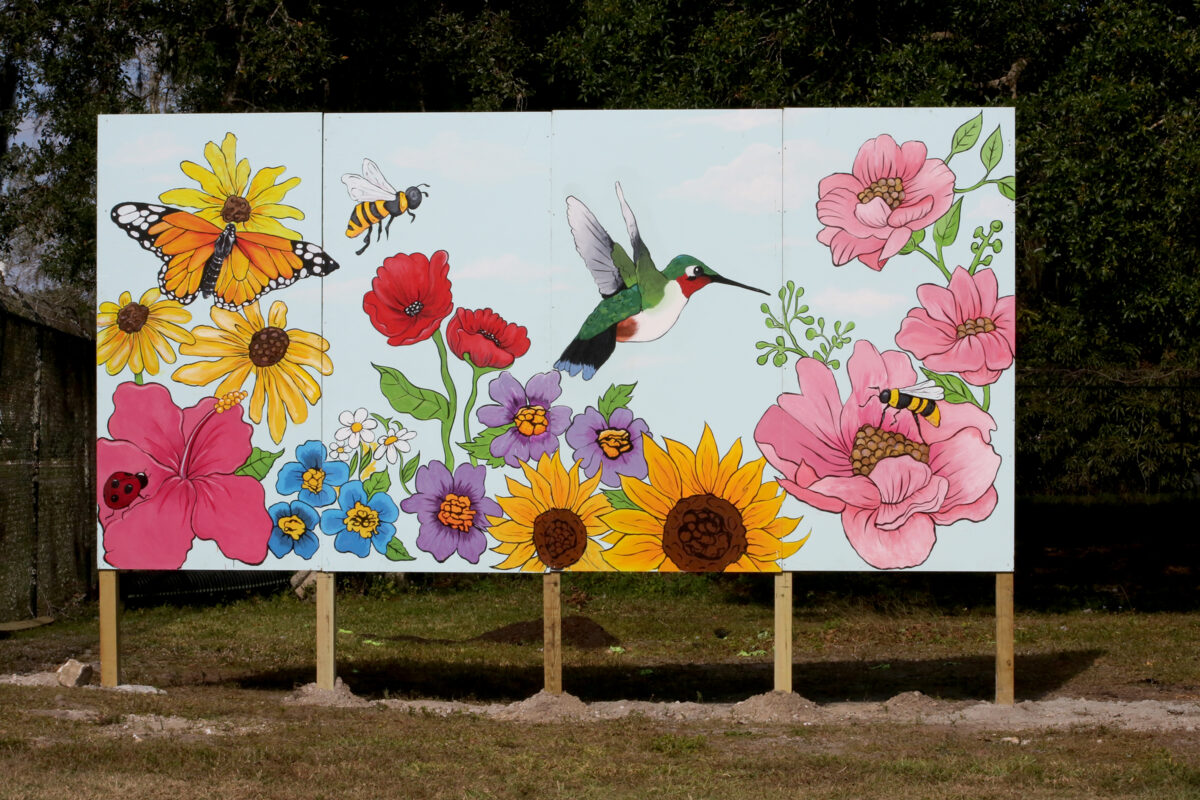
Raffy
Very good more food about Seminole